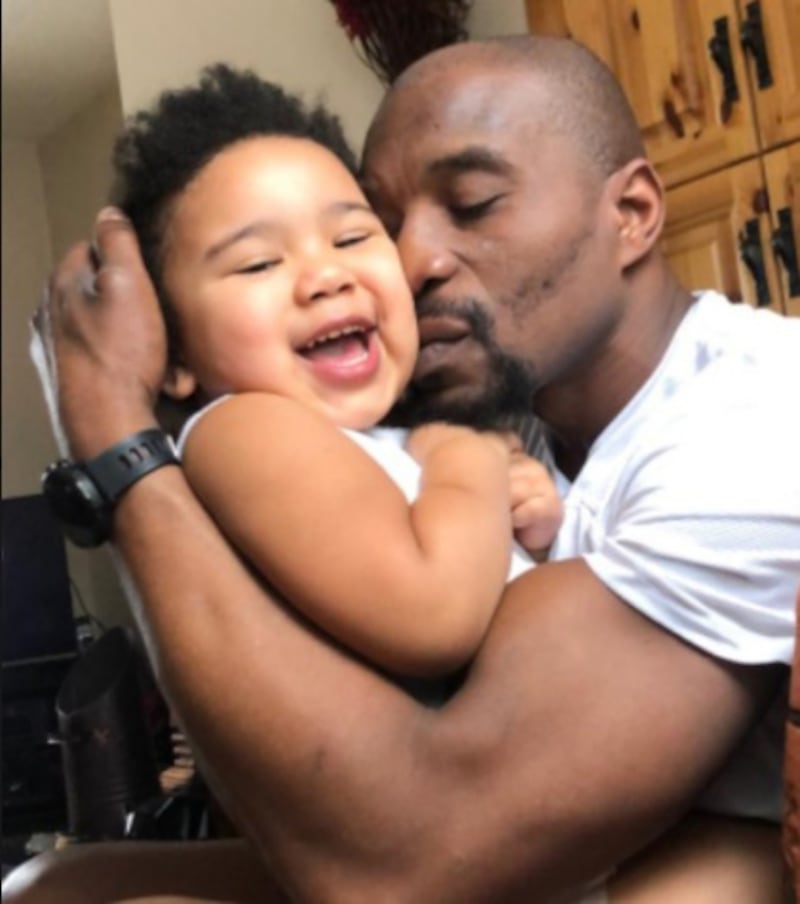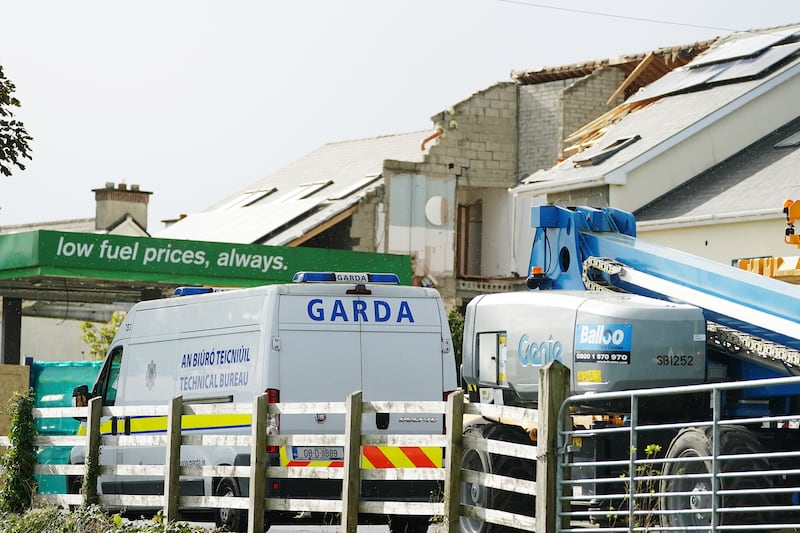About 10 minutes before 11am on a crisp autumn Saturday morning, the front door of a whitewashed terraced cottage in Creeslough was suddenly shut.
It had been open under a large black canopy all morning as hundreds gathered outside for the last of 10 funerals since last week’s explosion left a new different silence in the village.
Inside, Aine Flanagan had two final minutes alone at home with her partner Robert Garwe and their five-year-old daughter Shauna. Robert lay in a large polished wooden coffin, Shauna in a small wicker casket.
Two minutes. About the time it might have taken Robert and Shauna nipping into the village’s only shop to buy a birthday cake for Aine, when, in a “split second”, as parish priest Fr John Joe Duffy called it, the blast ended their lives.
‘Like the heart was ripped out of the village’: one year on from the Creeslough disaster
Creeslough: regeneration plan unveiled for Co Donegal village that suffered 2022 explosion
Creeslough: Woman who lost relatives in explosion says she would never enter shop built on site of tragedy
Ten people died in a furnace of twisted metal in Creeslough. Now the owner wants to build another filling station
Just as they were side by side in the shop that Friday afternoon, and often seen side by side in Creeslough, they lay side by side too in death.
When the front door reopened, Robert’s coffin was taken out first on wheels. It took six men to hold it aloft. It took just two to carry out Shauna.
When five boys were summoned to lift her casket, sealed at each end with little ropes tied in neat knots, there was barely enough room for them squeezed tightly together under it.
Two hearses, side by side, took the coffins. In Shauna’s was a floral wreath crowned with a toy unicorn, white with purple mane. Like countless other girls across Ireland, she too loved unicorns. Her favourite teddy was a unicorn.
Aine stood behind, physically supported on each side by her family. As the rear door of the hearse lowered, so too did her head. She blessed herself, and began to cry as the cortege began its ascent to St Michael’s Church.
The 300-metre walk to the church, the scene of many of this week’s funerals, passed by Shauna’s school, Scoil Mhuire.
Outside and lining the road were scores of her junior infant classmates. They were dressed in their navy and grey uniforms, smart shoes newly bought for the start of term, just as Shauna’s had been weeks ago.
One girl could not look and pushed her face away from the passing procession into her mother. The only sound in the village was the rhythmic scrape of countless shoe soles on the damp tarmac.
Such was the turnout, it was almost 20 minutes after the funeral was due to begin that most of the mourners had finally pressed inside the church. Hundreds more listened on a loudspeaker outside.
They filled the concourse, gathered on the grass verge of the car park, on the road and against the walls, and in the driveways of neighbouring houses.
Inside the chapel, where 10 candles still burn on the altar for each of the victims, Fr Duffy again welcomed the bereaved “gathered here again this morning” in “our little Creeslough”. This time from as far as Zimbabwe, where Robert grew up.
Many from the African community in Ireland were among the congregation, one videoing the funeral on his mobile phone for those who could not make it. Staff from Edenmore creche in north Dublin, where Shauna attended as a toddler, also made the journey.
Fr Duffy began by offering sympathy to “you Aine, on the death of your partner and your beautiful daughter”.
Symbols of their lives were brought forward, including a catapult after their love of hunting together, Robert’s hat, Shauna’s toy dog Kylo, her treasured unicorn teddy and her pink scooter — “part and parcel of their lives”.
“I’m not sure who could go fastest on the scooter, but I know on feet Shauna could outrun her dad, be it at the school gate, be it on the road where I so often saw them and met them, or be it in the shop where she helped to stack the shelves with the girls,” said Fr Duffy.

Describing what may have been their final moments “side by side in the shop”, he said: “I’m sure in that split second [Robert was] just wanting to help protect his beautiful daughter so very much.”
It was too much for one mourner: a young man who left the mass sobbing, looking at a photo on the front of the funeral booklet of Robert clutching Shauna in his arms.
Shauna was at her happiest painting and drawing, her teacher had said, had a brilliant sense of humour and had an artistic ability “far beyond that of junior infant” age. She adored animals. A great vet she might have been, Fr Duffy said.
She often spoke about her mammy and daddy in school, he said.
Always well turned out, she “loved her style, her beautiful shiny shoes and fantastic coats”. Indeed, she brought a spare pencil case to school with a little mirror “to make sure she looked her best”.
“She was so caring. If she saw a classmate upset or in need of help she was sure to run over and hug them and help them,” said Fr Duffy.
Around the cottages where she lived, Shauna was “adopted like a granddaughter” by many of the older residents, to whom she gave “a newness of life, as a radiant beacon of life”.
Shauna and Robert were “always together”, the priest said, “that little unit”. Robert was proud of Shauna, his other children and his “homeland” Zimbabwe. He often spoke of his roots.
“Aine, we would love to be able to reach into your heart to take away your pain,” Fr Duffy told her.
“But with great love, there is great pain.”
As the bodies were taken out of the church, before a private cremation, Aine kept her pinked gloved hands on Shauna’s wicker casket.
At the hearses, she was embraced by President Michael D Higgins and the pair spoke for a moment. In the changed silence of Creeslough, Aine turned again to the small wicker casket and placed her hands on top one last time.











